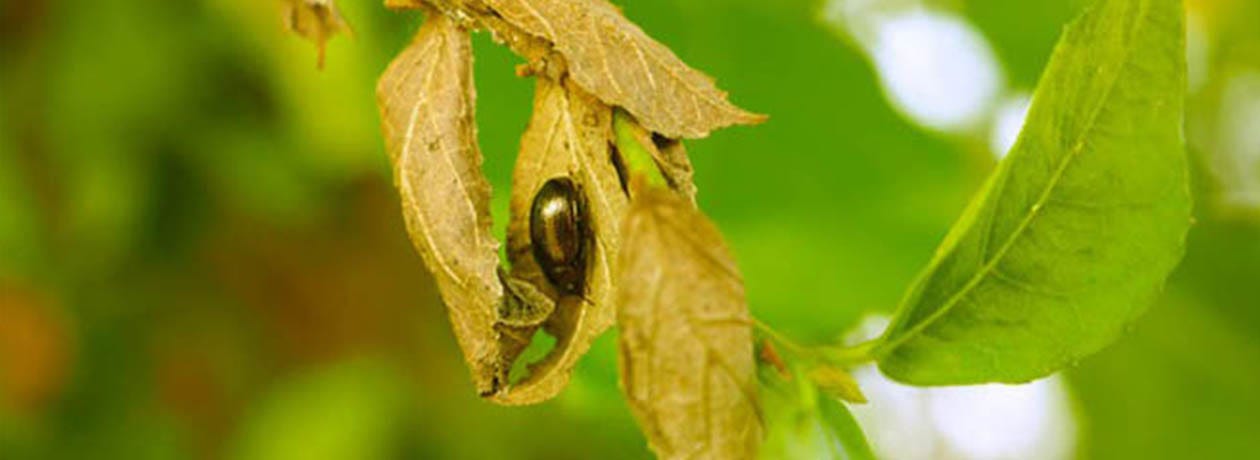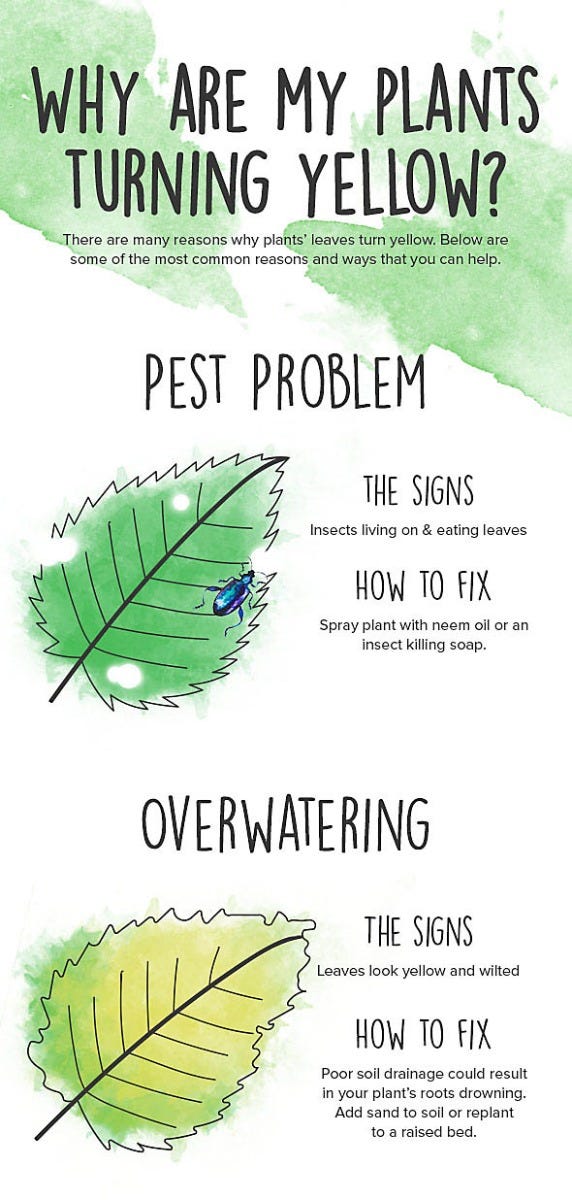Why Are My Plants Turning Yellow?

It happens to all gardeners.
One day they wake up and realize their tomato plant’s leaves are yellow and you have no idea why.
If this happens to your customers, tell them not to panic! We are here to help you answer their daunting questions and provide solutions!
Use the infographic below to understand what a plant might be trying to tell its human caretaker through different types of yellow leaves. After the graphic, we’ll explore a little more in depth of why leaves turn yellow and brown, and how to give plants the nutrients they need to stay green.

Common Reasons Leaves Turn YelloW
1) Waterlogged vs. Dehydration: The most typical reason a plant’s leaves turned yellow is because of water, but it’s tricky to understand whether they are over-watered or under-watered. Often the leaves of plants that are under-watered will be crispy with a slight curl to the leaf while over-watered leaves will be limp.
However, the plants leaves could be deceiving. A gardener might be watering their plant enough but the water just isn’t getting to the root, which would show signs of dehydration. This often causes gardeners to waterlog their plants, harming it even more. Take action by improving soil drainage with sand or replant to a raised bed.
2) Lack of Sunlight: Since plants differ on how many hours of direct sunlight they need, lack of sunlight is another common reason leaves turn yellow. Once it is determined that a plant is being watered correctly, try adjusting the location of the plant if possible.
3) Pest Problems: If a plant’s leaves are yellow with holes or pieces of the leaf missing, a plant eating pest may be to blame. Easily eliminate the bug without harming your plant by using neem oil or an insecticidal soap.
It's Not That, so Why are My Plants Turning Yellow?
If the gardener has ruled out the above possibilities then it’s time to take a closer look at those tell-tale leaves. While it’s not mentioned on the infographic above, sometimes plants can turn yellow because of fungus or disease such as early blight or septoria leaf spot. Use one of the Safer® Brand garden fungicide products to prevent and stop fungus growth on plants.
Plants require 13 essential minerals that they absorb through the soil. The yellow pattern on leaves could indicate which vital nutrient your plant is missing. The nutrients plants need most are nitrogen, phosphorus and potassium.
Secondary nutrients required by plants include calcium, magnesium and sulfur. Many of these elements can be found in fertilizers or compost that a gardener can apply to the soil. Calcium and magnesium are also found in lime.
Plants need a small amount of boron, copper, iron, chloride, manganese, molybdenum, and zinc. These trace elements are often found in grass clippings, tree leaves and other organic matter that you can compost and later add to soil once again.
The best thing to do when a plant’s leaves get yellow spots or turn yellow, brown, or black is to get the soil tested to determine which nutrients the plant is missing.
